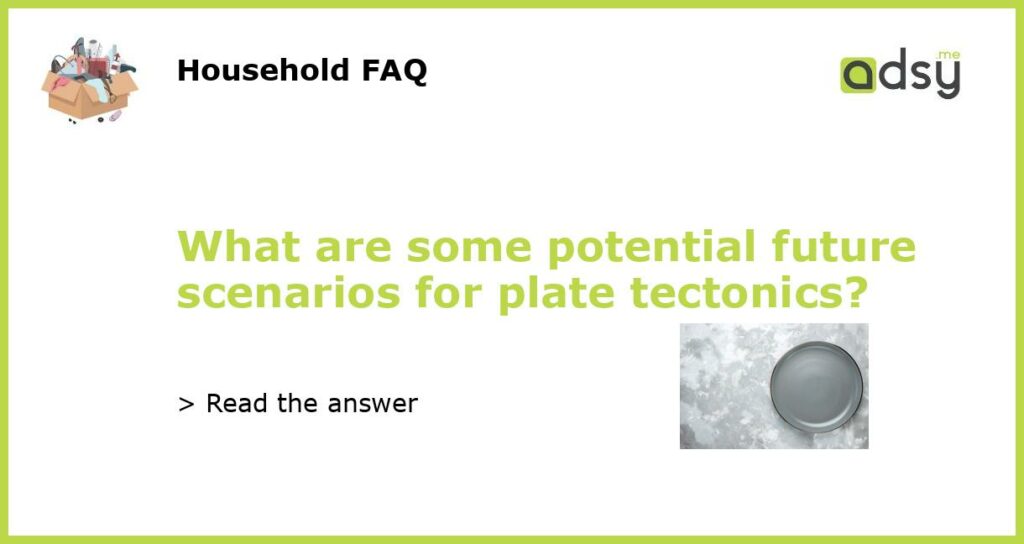Potential Future Scenarios for Plate Tectonics
Plate tectonics is a fundamental process that shapes the Earth’s surface. It is responsible for creating and destroying continents, causing earthquakes and volcanic eruptions, and driving the movement of the Earth’s crust. While plate tectonics has been ongoing for millions of years, scientists are constantly studying and predicting potential future scenarios that could occur. Here are some of the potential future scenarios for plate tectonics:
Supercontinent Formation
One possible future scenario for plate tectonics is the formation of a new supercontinent. Supercontinents are massive landmasses that result from the collision and aggregation of multiple smaller continents. In the past, supercontinents like Pangaea and Gondwana have formed and eventually broke apart due to plate tectonics.
Scientists speculate that a future supercontinent, often referred to as “Amasia,” could form in the next 50 to 200 million years. This hypothetical supercontinent would bring together the continents of North and South America, Antarctica, and portions of Europe and Asia. The formation of Amasia would dramatically change global geography, altering coastlines, ocean currents, and climate patterns.
Changes in Subduction Zones
Subduction zones, where one tectonic plate slides beneath another, are key features of plate tectonics. They play a vital role in the recycling of Earth’s crust and the formation of volcanic arcs. Currently, most subduction zones are located around the Pacific Ocean, forming the “Ring of Fire.”
In the future, the configuration of subduction zones could shift, leading to significant changes in volcanic activity and seismicity. For example, scientists predict that subduction zones may become more prevalent in the Atlantic Ocean, potentially causing increased volcanic activity along the eastern coastlines of North and South America. Understanding these potential changes is crucial for predicting and mitigating natural hazards.
Accelerated Tectonic Activity
While plate tectonics typically operate on geological timescales, there is evidence to suggest that tectonic activity could be accelerated in the future. This acceleration could be due to various factors, including changes in mantle convection, impacts from large asteroids or comets, or the effects of climate change on the Earth’s crust.
If tectonic activity were to accelerate significantly, it could lead to more frequent and intense earthquakes and volcanic eruptions. This would have significant implications for human populations living in seismically active areas. It is crucial for scientists to continue monitoring and studying tectonic activity to better anticipate and mitigate future risks.
Influence of Climate Change
Climate change is another factor that could potentially impact plate tectonics. As the Earth’s climate warms, the melting of glaciers and ice caps can cause changes in the distribution of weight on the Earth’s surface. This redistribution of mass could influence the movement of tectonic plates.
Some scientists suggest that the melting of the Greenland and Antarctic ice sheets could lead to an increased rate of tectonic activity in the surrounding regions. This is because the removal of enormous amounts of ice would result in the rebound of the Earth’s crust, potentially triggering seismic events. However, further research is needed to understand the complex interactions between climate change and plate tectonics.
Advances in Geological Monitoring
As technology continues to advance, so does our ability to monitor and study plate tectonics. Sophisticated monitoring systems, such as GPS networks, satellite imagery, and seismometers, provide scientists with real-time data on tectonic activity.
This improved monitoring allows scientists to detect subtle changes in plate movement and predict potential future scenarios more accurately. Understanding these future scenarios is vital for planning and implementing measures to mitigate the potential impacts of tectonic activity, such as designing earthquake-resistant buildings and infrastructure.
In conclusion, the future of plate tectonics holds many possibilities. From the formation of new supercontinents to changes in subduction zones and accelerated tectonic activity, scientists are continuously studying and predicting potential future scenarios. Climate change and advances in monitoring technology are also expected to play significant roles. By understanding these potential scenarios, scientists can better anticipate and prepare for the changes that lie ahead.






